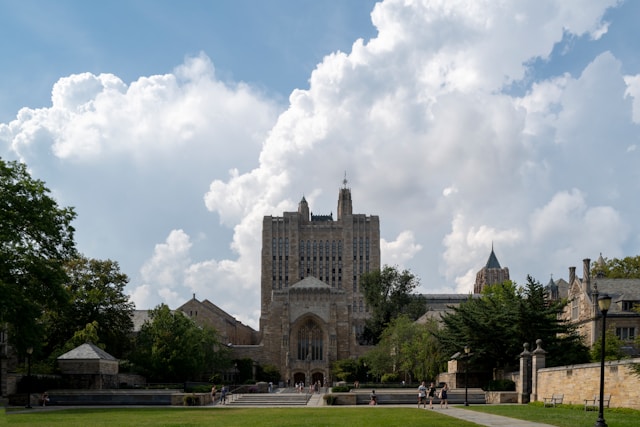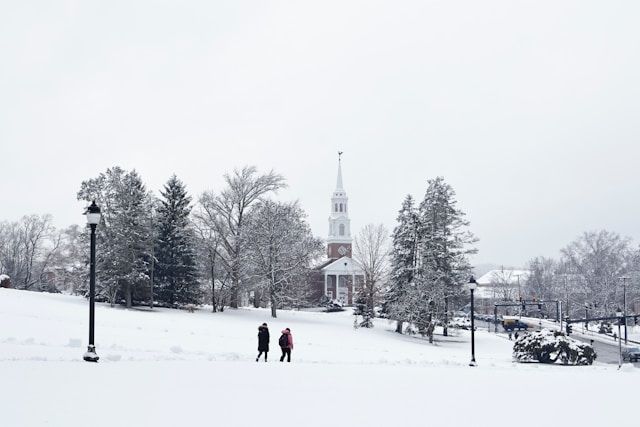When you visit the picturesque town of Storrs, Connecticut, you’ll find more than just a charming New England community. At the heart of this town sits the University of Connecticut (UConn), where agricultural research thrives through the historic Storrs Agricultural Experiment Station (SAES). The Storrs Agricultural Experiment Station, founded in 1887, serves as the administrative hub for UConn’s College of Agriculture, Health and Natural Resources research programs, directing vital agricultural studies that impact Connecticut and beyond.
The research conducted at UConn extends well beyond classroom walls. Just two miles south of the main campus on Route 195, you’ll discover the UConn Research Farm, managed by the Department of Plant Science and Landscape Architecture. This working farm serves as a living laboratory where faculty and students collaborate on innovative agricultural projects. Visitors might glimpse researchers testing new farming techniques or developing sustainable agricultural practices.
Get a discount of 15% to 70% on accommodation in Connecticut! Look for deals here:
Connecticut Hotels, Apartments, B&Bs
UConn’s agricultural research reputation extends globally, with its Department of Agricultural & Resource Economics ranking among the top 25 research institutions worldwide. The research conducted through the Storrs Agricultural Experiment Station represents a blend of tradition and innovation, where multidisciplinary teams tackle modern agricultural challenges. For those interested in how academic research translates to real-world solutions, Storrs offers a fascinating glimpse into the future of farming and food production.
Historical and Institutional Context
The University of Connecticut’s agricultural roots run deep, shaping its development from a small agricultural school to a comprehensive research institution. This evolution reflects broader changes in agricultural education and research priorities over more than 140 years.
UConn’s Agricultural Beginnings
The University of Connecticut began as Storrs Agricultural School in 1881, forming the foundation of what would become the state’s flagship university. Unlike other similar institutions of its time, it was not initially part of the original land-grant university system established by the Morrill Act.
The school quickly established itself in agricultural research with the Storrs Agricultural Experiment Station formally established in April 1888. Professor W.O. Atwater of Wesleyan University served as its first leader. This development came after some dispute over which Connecticut institution would receive experimental station funding, with the Connecticut State Grange supporting Storrs’ claim.
Early UConn was also home to groundbreaking genetics research. During the early 20th century, when known as Connecticut Agricultural College, the institution was at the forefront of genetics study in the United States, led by scientist Albert F. Blakeslee.
Storrs Agricultural School to Modern Day University
The institution underwent several name changes reflecting its expanding mission – from Storrs Agricultural School to Connecticut Agricultural College and eventually the University of Connecticut. This evolution represents a broadening of academic focus beyond its agricultural roots.
Under President Homer D. Babbidge Jr. (1962-1972), UConn moved toward a more liberal arts and humanistic focus, creating a productive tension with its agricultural and technical traditions. This period marked a significant shift in institutional identity while maintaining connections to its founding purpose.
The development of the UConn Health Center further strengthened the university’s research capabilities across multiple disciplines. Today’s UConn balances its agricultural heritage with its identity as a comprehensive research university serving Connecticut and beyond.
Mission of the College of Agriculture
The College of Agriculture, Health and Natural Resources (CAHNR) carries forward UConn’s agricultural mission with modern approaches to research and education. As the university’s oldest college, CAHNR maintains the agricultural focus that birthed the institution.
Research at CAHNR is increasingly conducted through multidisciplinary teams that include faculty from across UConn and other institutions. This collaborative approach addresses complex agricultural and natural resource challenges facing Connecticut and the world.
The Storrs Agricultural Experiment Station (SAES) continues to administer CAHNR research programs with funding from federal, private, and nonprofit organizations. This historic entity adapts to contemporary research needs while maintaining continuity with UConn’s past.
Current Research Initiatives and Impact
The Storrs Agricultural Experiment Station (SAES) at UConn spearheads cutting-edge research that addresses real-world agricultural challenges. These initiatives span from advanced biotechnology to economic policy, creating solutions that benefit Connecticut farmers and beyond.
Innovations in Agricultural Biotechnology
UConn’s agricultural biotechnology research focuses on developing novel solutions to enhance crop productivity and resilience. Researchers utilize state-of-the-art laboratory facilities to engineer plants with improved disease resistance and nutritional profiles.
A standout project includes Dr. Abhinav Upadhyay’s work funded by a $3.34 million USDA-NIFA grant that applies cutting-edge expertise to address challenges in organic agriculture. This research employs biotechnological approaches to reduce dependence on conventional pesticides.
The university’s biotech initiatives frequently partner with local farmers to ensure innovations address practical field challenges. Recent developments include drought-resistant crop varieties uniquely adapted to Connecticut’s climate conditions.
These biotechnology advances represent the bridge between laboratory science and practical applications for farmers throughout the Northeast region.
Advancements in Crop Genetics and Physiology
UConn’s crop genetics research teams utilize the university’s extensive greenhouse facilities to study plant development and response mechanisms. Their work focuses on understanding how plants respond to environmental stressors like drought, disease, and temperature fluctuations.
Scientists at the College of Agriculture, Health and Natural Resources (CAHNR) map genetic traits that control key agricultural characteristics such as yield, flavor, and shelf life. This genetic research directly supports Connecticut’s diverse agricultural sector.
Recent breakthroughs include identifying genetic markers for cold tolerance in specialty crops important to the state’s economy. These findings help farmers select varieties better suited to Connecticut’s growing conditions.
The university’s plant physiology work examines root architecture, photosynthetic efficiency, and nutrient uptake—crucial knowledge for maximizing crop productivity on Connecticut’s varied soil types.
Sustainable Practices and Land Use
UConn researchers are pioneering sustainable agricultural methods that conserve natural resources while maintaining farm productivity. Their work includes developing improved soil management techniques that reduce erosion and enhance carbon sequestration.
Studies on integrated pest management at UConn’s research farms provide Connecticut growers with environmentally friendly alternatives to conventional pesticides. These approaches protect beneficial insects while controlling harmful pests.
Land use research examines the impact of recreational home ownership on agricultural land, a significant concern in Connecticut’s changing rural landscape. This work helps inform land conservation policies.
Water conservation initiatives explore efficient irrigation systems and drought-resistant farming practices. UConn’s demonstration plots showcase these techniques for local farmers to observe firsthand.
The university’s commitment to sustainable agriculture addresses both ecological concerns and the economic viability of Connecticut’s farms.
Resource Economics and Food Policy
The Department of Agricultural & Resource Economics at UConn conducts critical research on food systems, market dynamics, and agricultural policy. Their economists analyze how policy decisions impact Connecticut’s farmers and food security.
Recent studies have examined supply chain resilience following pandemic disruptions. These findings help local producers navigate market volatility and identify new opportunities.
The department’s researchers engage directly with Connecticut farmers to understand their changing needs. Their comprehensive survey identified key challenges facing agricultural producers and specific ways UConn can support them.
Economic models developed at UConn evaluate the financial implications of adopting new agricultural technologies or conservation practices. This research helps farmers make informed business decisions while balancing sustainability goals.
Faculty frequently provide expert testimony to state policymakers, ensuring that Connecticut’s agricultural regulations reflect both current science and economic realities.
Get a discount of 15% to 70% on accommodation in Connecticut! Look for deals here:
Connecticut Hotels, Apartments, B&Bs








